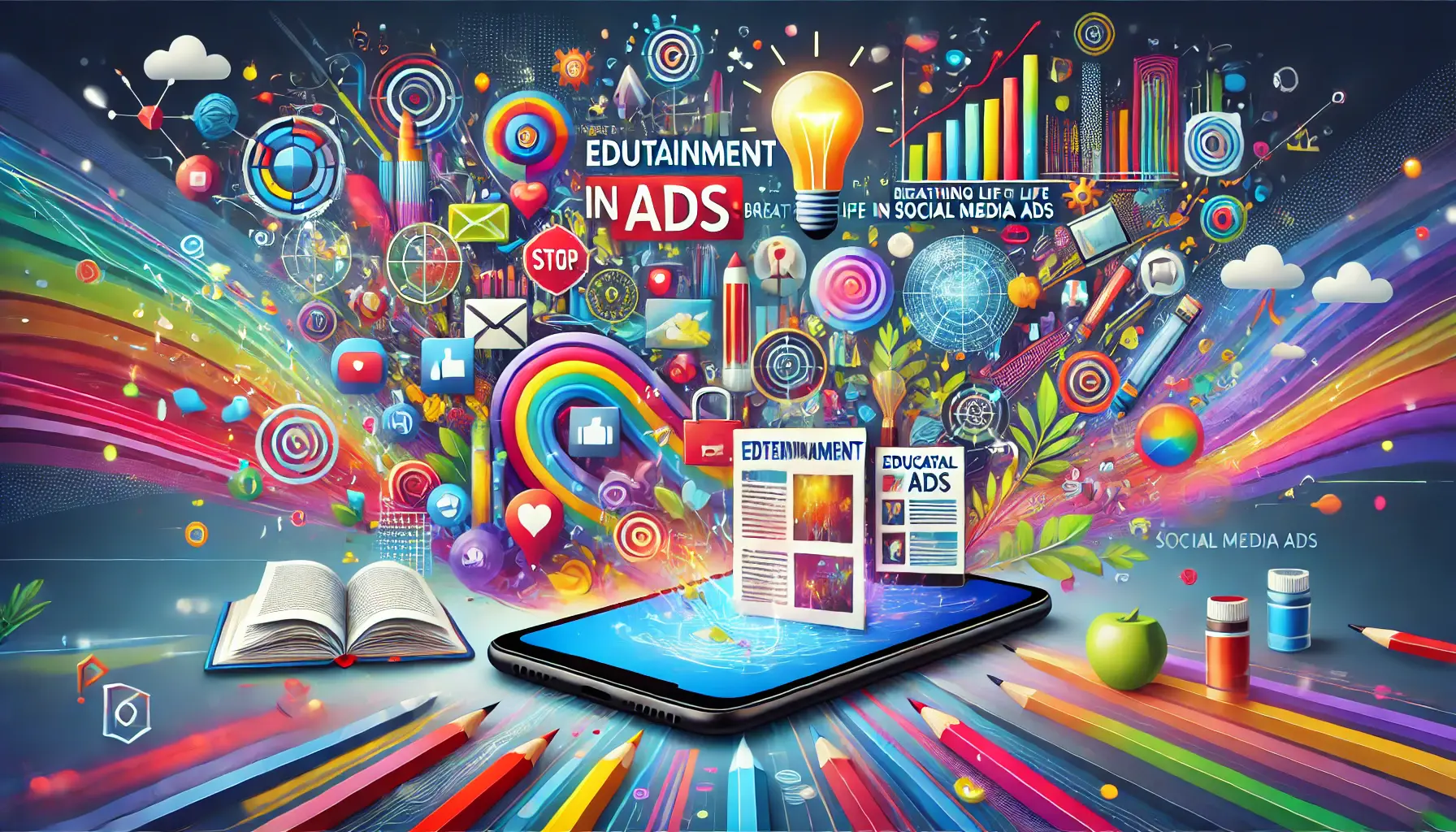As the digital landscape continuously evolves, the realm of social media advertising has become a pivotal platform for businesses to engage with their target audience.
The effectiveness of these ads largely hinges on the choice of ad formats, which are as diverse as the social media platforms themselves.
Understanding the nuances of these formats is crucial for marketers aiming to maximize their online presence and audience engagement.
In this comprehensive exploration, we delve into the various ad formats prevalent in social media advertising.
Each format offers unique benefits and caters to different aspects of consumer interaction and brand messaging.
From the visually striking image ads to the dynamic and engaging video ads, the spectrum of ad formats in social media is vast and versatile, offering marketers a plethora of options to tailor their advertising strategies effectively.
- The Impact of Image Ads in Social Media
- Exploring Carousel Ads in Social Media
- Video Ads: Capturing Attention in Social Media
- Interactive Ads: Engaging Audiences on a Deeper Level
- Story Ads: The Power of Ephemeral Content
- Lead Generation Ads: Converting Interest into Action
- Utilizing Messenger Ads for Direct Engagement
- Maximizing Impact with Diverse Ad Formats in Social Media
- Frequently Asked Questions About Social Media Ad Formats
The Impact of Image Ads in Social Media
Image ads stand as one of the most straightforward yet powerful tools in social media advertising.
Their simplicity in design and ease of consumption make them a go-to choice for many brands.
These ads leverage the power of visuals to tell a brand’s story, evoke emotions, and create a lasting impression.
The key to success with image ads lies in high-quality, captivating imagery that resonates with the target audience.
Brands often use image ads to showcase their products, highlight their unique selling points, or convey a specific mood associated with their brand identity.
The effectiveness of these ads is amplified when they are strategically placed in a user’s feed, seamlessly blending with organic content, thus enhancing user engagement without being intrusive.
Optimizing Image Ads for Maximum Engagement
To optimize image ads for higher engagement, brands must focus on creative elements such as composition, color scheme, and visual storytelling.
The image should be relevant to the brand and appealing to the target audience.
Additionally, incorporating a clear and compelling call-to-action (CTA) can significantly boost conversion rates.
It’s also essential to tailor these ads to the specific platform’s requirements, such as aspect ratios and resolution, to ensure they display correctly across different devices.
A key point to remember is that image ads, while simple, require a deep understanding of the brand’s visual identity and audience preferences to be truly effective.
They are not just about displaying a product but about conveying a message that aligns with the brand’s overall marketing goals.
Exploring Carousel Ads in Social Media
Carousel ads represent a dynamic shift in social media advertising, allowing brands to showcase multiple images or videos within a single ad unit.
This format is particularly effective for storytelling, displaying a range of products, or conveying a process step-by-step.
Carousel ads encourage user interaction as they swipe through the various ‘cards’, each potentially offering a new piece of information or a different aspect of a product or service.
Key advantages of carousel ads include:
- Versatility: They can be used for various purposes, from product catalogs to brand storytelling.
- Higher Engagement: The interactive nature of swiping through different ‘cards’ keeps users more engaged.
- Space for Creativity: More room for creative content compared to single image or video ads.
When designing carousel ads, it’s crucial to:
- Ensure each card is visually cohesive and tells a part of the overall story.
- Use high-quality images or videos to maintain user interest.
- Include a clear CTA, either on each card or at the end of the carousel.
Case Studies and Success Stories
Many brands have successfully leveraged carousel ads to boost engagement and conversions.
For instance, a fashion retailer might use carousel ads to display different clothing items from a new collection, while a travel agency could showcase various destinations through captivating imagery.
These real-life applications highlight the format’s effectiveness in engaging users and driving specific actions.
A creative idea for carousel ads is to use them for user-generated content, showcasing customer reviews or how customers are using the product in real life.
This not only provides authenticity but also builds a community around the brand.
Video Ads: Capturing Attention in Social Media
Video ads have emerged as a dominant force in social media advertising, known for their ability to capture attention and drive engagement.
These ads can range from short, snappy clips to longer, more narrative-driven content.
The power of video ads lies in their ability to tell a compelling story, demonstrate a product in action, or convey complex information in an easily digestible format.
Effective video ads often include:
- Engaging storytelling that resonates with the target audience.
- High-quality production values to maintain viewer interest.
- Clear and concise messaging aligned with the brand’s objectives.
Strategies for maximizing the impact of video ads:
- Optimizing video length for each social platform to ensure maximum viewer retention.
- Incorporating subtitles or captions for viewers watching without sound.
- Using a strong opening to grab attention within the first few seconds.
Utilizing Video Ads Across Different Platforms
Each social media platform offers unique opportunities for video ads.
For example, Instagram Stories and TikTok are ideal for short, engaging videos that make an instant impact.
In contrast, YouTube allows for longer-form content that can delve deeper into a topic or product.
Understanding the nuances of each platform is key to creating effective video ads that resonate with the specific audience on that platform.
Note that video ads require a balance between creativity and clarity.
While it’s important to be creative and engaging, the message should always be clear and aligned with the brand’s goals.
Interactive Ads: Engaging Audiences on a Deeper Level
Interactive ads in social media are revolutionizing the way brands engage with their audience.
These ads invite users to interact directly with the content, whether through quizzes, polls, augmented reality (AR) experiences, or interactive videos.
This format not only boosts engagement but also provides valuable insights into consumer preferences and behaviors.
Key elements of successful interactive ads include:
- User Participation: Encouraging users to actively engage with the ad, such as voting in a poll or exploring an AR filter.
- Creativity and Innovation: Utilizing the latest technological advancements to create unique and memorable experiences.
- Relevance to the Audience: Tailoring the interactive elements to resonate with the target demographic.
Strategies for crafting compelling interactive ads:
- Aligning the interactive elements with the brand’s message and goals.
- Ensuring the interaction is intuitive and adds value to the user’s experience.
- Measuring user engagement and feedback to refine future ad campaigns.
Case Study: Leveraging AR for Product Showcases
A notable example of interactive ads is the use of AR technology by beauty brands.
These brands have created AR filters that allow users to virtually ‘try on’ makeup products.
This not only provides an engaging experience but also helps consumers make informed purchase decisions, leading to higher conversion rates.
Featured Info: Interactive ads, especially those incorporating AR and VR, are set to become more prevalent as technology advances, offering new and exciting ways for brands to connect with their audience.
Story Ads: The Power of Ephemeral Content
Story ads, a format popularized by platforms like Instagram and Snapchat, have become a staple in social media advertising.
These ads appear between user-generated stories, offering a seamless viewing experience.
The ephemeral nature of story ads, typically disappearing after 24 hours, creates a sense of urgency and encourages immediate engagement.
Effective story ads often feature:
- Compelling visuals and concise messaging that align with the fleeting nature of stories.
- Direct and clear CTAs, encouraging immediate action such as swiping up or clicking a link.
- Creative use of filters, stickers, and other interactive elements to enhance engagement.
Strategies for maximizing the impact of story ads:
- Creating content that feels native to the story format, blending with user-generated content.
- Utilizing time-sensitive offers or exclusive content to leverage the format’s urgency.
- Testing different creative approaches to see what resonates best with the audience.
Embracing Authenticity in Story Ads
One of the key strengths of story ads is their ability to convey authenticity.
Brands often use this format to give a behind-the-scenes look at their operations, showcase real-life customer experiences, or present products in a more relatable, down-to-earth manner.
This authenticity helps in building trust and a stronger connection with the audience.
Truth: Story ads are particularly effective for targeting younger demographics who value authenticity and are more inclined to engage with content that feels genuine and unscripted.
Lead Generation Ads: Converting Interest into Action
Lead generation ads on social media are designed to capture user interest and convert it into actionable leads.
These ads typically feature a form that users can fill out without leaving the platform, making the process seamless and user-friendly.
They are ideal for collecting information like email addresses, names, and other relevant details, which can be used for future marketing campaigns.
Essential components of effective lead generation ads include:
- Clear Value Proposition: Communicating the benefits of signing up or providing information.
- Simple and User-Friendly Forms: Minimizing the number of fields to reduce friction and increase completion rates.
- Strong Call-to-Action: Encouraging users to take the desired action with compelling and clear CTAs.
Best practices for lead generation ads:
- Offering incentives like ebooks, webinars, or discounts to motivate users to fill out the form.
- Ensuring the ad’s visual and message align with the landing page for a cohesive user experience.
- Regularly testing and optimizing ad elements based on performance metrics.
Targeting and Personalization in Lead Generation
Effective targeting is crucial for lead generation ads.
By leveraging the rich demographic and behavioral data available on social media platforms, brands can tailor their ads to reach the most relevant audience.
Personalization further enhances the effectiveness of these ads, making the offer more appealing to the individual user.
Idea: Incorporating interactive elements like quizzes or polls within lead generation ads can increase engagement and provide more qualified leads, as users are more likely to provide their information after interacting with the ad.
Utilizing Messenger Ads for Direct Engagement
Messenger ads are a unique format in social media advertising, allowing brands to engage directly with users in a more personal and conversational manner.
These ads appear within the chat interfaces of platforms like Facebook Messenger, offering an opportunity for one-on-one interaction.
This direct engagement can be particularly effective for customer service, personalized recommendations, or nurturing leads.
Key aspects of successful messenger ads:
- Personalized messaging that resonates with the individual user.
- Quick and automated responses using chatbots to maintain user engagement.
- Clear and concise CTAs that guide users towards the desired action.
Strategies for leveraging messenger ads:
- Using messenger ads to initiate conversations and build relationships with potential customers.
- Integrating chatbots to provide instant responses and guide users through a predefined path.
- Offering exclusive deals or information through messenger ads to enhance the perceived value of direct engagement.
Enhancing Customer Experience with Messenger Ads
Messenger ads can significantly enhance the customer experience by providing instant, personalized interaction.
Brands can use these ads to answer queries, offer support, or provide tailored recommendations based on the user’s previous interactions or interests.
This level of personalization can lead to increased customer satisfaction and loyalty.
Key Point: Messenger ads are not just about selling a product or service; they are about creating a dialogue with the customer, understanding their needs, and offering solutions in a conversational and engaging manner.
Maximizing Impact with Diverse Ad Formats in Social Media
In the ever-evolving landscape of social media, the diversity and effectiveness of ad formats have become a cornerstone for successful digital marketing strategies.
From the visually engaging image and video ads to the interactive and personalized experiences offered by carousel, story, and messenger ads, each format presents unique opportunities for brands to connect with their audience.
The key to leveraging these ad formats lies in understanding their specific strengths and aligning them with the brand’s marketing objectives.
Strategic Integration of Ad Formats for Enhanced Engagement
Integrating various ad formats into a cohesive marketing strategy can significantly enhance audience engagement and campaign effectiveness.
For instance, combining the broad reach of image ads with the interactive nature of carousel ads can create a more dynamic and engaging user experience.
Similarly, the use of video ads for storytelling, complemented by direct engagement through messenger ads, can lead to higher conversion rates and stronger customer relationships.
Effective strategies for integrating diverse ad formats include:
- Aligning ad formats with the target audience’s preferences and behaviors.
- Creating a narrative across different ad formats to build a cohesive brand story.
- Utilizing data-driven insights to optimize ad formats for specific campaign goals.
Future Trends and Innovations in Social Media Ad Formats
As social media platforms continue to evolve, we can anticipate further innovations in ad formats.
Emerging technologies like augmented reality (AR) and virtual reality (VR) are set to redefine the interactive ad experience, offering even more immersive ways for brands to engage with their audience.
Additionally, the increasing importance of data privacy and user consent will likely shape the development of new ad formats that are both effective and respectful of user preferences.
In conclusion, the diverse world of ad formats in social media ads offers a rich palette for brands to craft compelling and effective advertising campaigns.
By strategically choosing and integrating these formats, brands can not only capture the attention of their audience but also foster deeper connections, driving both engagement and conversions.
As we look to the future, staying abreast of emerging trends and continuously adapting strategies will be key to success in the dynamic realm of social media advertising.
Enjoyed the article? Let its author handle your social media ads. Visit our service page to get started!
Frequently Asked Questions About Social Media Ad Formats
Delving into the world of social media ad formats can raise numerous questions.
Here, we address some of the most frequently asked questions to provide clarity and insight into this dynamic aspect of digital marketing.
Image ads, carousel ads, video ads, story ads, and interactive ads are among the most effective social media ad formats, each offering unique engagement opportunities.
Carousel ads enhance engagement by allowing users to interactively swipe through multiple images or videos, offering a more dynamic storytelling experience.
Video ads stand out due to their ability to convey stories and complex information in an engaging, visually appealing format, capturing user attention effectively.
Yes, interactive ads can significantly increase conversion rates by actively involving users in the ad experience, leading to higher engagement and interest.
Story ads are effective for time-sensitive offers due to their ephemeral nature, creating urgency and encouraging immediate user action and engagement.
Messenger ads play a crucial role in direct customer engagement, offering personalized, one-on-one interactions that can enhance customer experience and loyalty.
Lead generation ads work by presenting users with a form within the ad, making it easy to capture essential information like email addresses for future marketing.
Interactive ads are versatile and can be tailored to suit various business types, offering unique and engaging ways to connect with diverse audiences.










